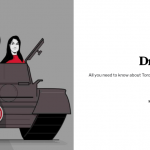Back to school: Resources for journalism students
J-Source has compiled some great back-to-school resources to help students get back in the groove.
Compiled by J-Source staff
September can be a stressful time for students, but whether you’re a first-year j-school student or a returning one, J-Source has you covered.
We’ve compiled a number of great back-to-school resources to help get you back in the groove.
You are not alone
Chances are other journalism students have run into some of the same challenging situations you’ll face. So why not read how they got through and learn from their experience? You can read about how a King’s journalism class got a National Newspaper Award nomination for its investigation into P.E.I’s cash-for-residency immigration policy. Learn how two UBC students gained the trust of an aboriginal community and were granted access to report on a secretive tradition only a few outsiders have seen.
You’ll also want to read about when former Canadian University Press national bureau chief Emma Godmere received a visit from a bailiff about a potential lawsuit for a hyperlink in a CUP story. And don’t miss Hayden Kenez’s case story about what happened when Christie Blatchford got it wrong on-air and Kenez had to do some damage control to protect his reputation as a student journalist.
A student journalist is still a journalist, so it’s important to read up on student codes of ethics—most schools have one—as well as guidelines developed by the Canadian Association of Journalists’ Ethics Advisory Committee. You should also take a moment to consider what responsible journalism means in today’s fast-paced news world.
Try something different
Uninspired by a streeter assignment? Ryerson student Eric Mark Do explains how the Hamilton Spectator took an ordinary streeter assignment and made it something special (hint: they were blindfolds involved). Lola Fakinlede, a Western University student, explains what she learned from a special military journalism course. If you’re looking for a change of pace, Ryerson University professor Ira Basen explains why every student should consider studying public relations. And when all else fails, if you see something that frustrates you about j-school, take control of your own education.
A reality check
There’s no denying this is a tough time to be a journalist. Student enrollment in journalism programs is increasing while internship opportunities are decreasing. Canadian student newspapers have been hit hard by the same decline in print advertising that’s hurt many newspapers in recent years, and that means big changes are coming this fall to how students will be able to access news and gossip on errant student unions, varsity sports and study drugs.
[node:ad]But just because it may be tough to find a job doesn’t mean it’s impossible. Meagan Gillmore, who just finished up a contract at the Yukon News, looks back at j-school from a real-world vantage point and offers some advice to current students. Summer intern at the New Brunswick Telegraph-Journal Rhiannon Russell shares her insight for nailing the perfect interview and how to make the most of an internship in a new city.
What if you finish j-school and can’t find a job? Don’t despair: there’s still hope. Vanessa Santilli spoke with j-grads who have successful careers in journalism-related jobs that are outside a newsroom (and they aren’t all in public relations).
Tools and tips
You may also want to take a peek at this list of resources that former education editor Mary McGuire originally compiled for journalism instructors. There are tips for learning the basics (writing, researching and interviewing) for visual and broadcast journalism (television, radio and photography), as well as new and emerging media (blogging, social media, visual journalism and multimedia). Be sure to check out The Globe and Mail media reporter Steve Ladurantaye’s 26 Twitter rules for journalists and 15 common writing errors that you can avoid. J-Source’s Law editor Thomas Rose frequently writes about media law and what it means for journalists.
Industry news
Keeping up on the latest journalism news and trends is always a good idea. Did you know that paywalls are more prevalent in Canada than in U.S. and U.K.? Have you ever heard of drone journalism?
J-Source will keep you up-to-date on industry news throughout the year, from developments with media law and ethics, comings and goings within the industry, the business of journalism and expert commentary on important issues of the day. Learn from the experience of other journalists and check out reviews of books written by and for journalists.
You should also use Twitter to follow The Globe and Mail media reporters Simon Houpt and Steve Ladurantaye, as they regularly report on the industry, as well as the U.S.-based Poytner Institute. Follow the hashtag #cdnmedia for up-to-the-minute commentary on the Canadian media and journalism industry. The Toronto Star’s public editor Kathy English and the Globe’s public editor Sylvia Stead also regularly offer insight into the ethical quandaries at their respective newspapers.
Continuing education
Join the Canadian Association of Journalists, Magazines Canada and the RTDNA, which offer various professional development opportunities throughout the year, or attend a thought-provoking J-Talk by the Canadian Journalism Foundation. Consider joining the Canadian Journalists for Free Expression and Journalists for Human Rights.
Last but not least, if you have an idea for something you’d like to see on J-Source—be it a story pitch or a journalism-related class assignment you think others would enjoy reading—send it our way.
Tamara Baluja is an award-winning journalist with CBC Vancouver and the 2018 Michener-Deacon fellow for journalism education. She was the associate editor for J-Source from 2013-2014.




